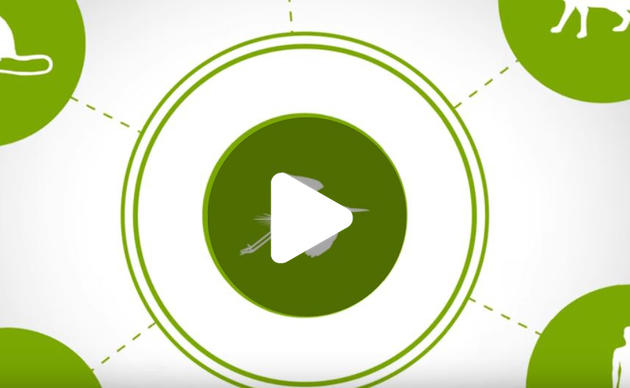According to a groundbreaking study published today by scientists from the National Audubon Society and the National Park Service, more than 20 percent of the bird species found in some of America’s most well-known national parks could be completely different by mid-century because of a changing climate. The peer-reviewed study appears today in PLOS ONE and delivers another sobering reminder of the threat climate change poses to birds.
The study authors analyzed 274 sites managed by the National Park Service and overlaid them with climate suitability models for birds known to spend summers and winters within the parks. The suitability models were then linked to two different trajectories of greenhouse gas emissions representing low and high emissions paths. The low-end pathway incorporates the most stringent mitigation scenario where the high-end represents “business as usual” (i.e. our current path).
In scenarios with lower carbon emissions there are fewer projected changes found in parks. But on the high end of emissions—or continuing on our current path— Bald Eagles may leave the Grand Canyon during the winter and Mountain Bluebirds may stop breeding in Badlands National Park over the summer.
Because more birds have the potential to move into national parks than move out, public lands will continue serving as important bird habitat despite a changing climate. Each site will receive a “climate brief,” which outlines which bird species are currently found within the park, which new species may colonize the park and which current species may be locally extirpated.
“Helping our staff understand these potential changes and incorporate climate change into resource management will benefit the birds that will increasingly rely on our national parks. This information will also inform work in parks and with neighboring communities to support and enhance recreational birdwatching,” said Gregor Schuurman, National Park Service ecologist and the study's co-author.
In 2014, Audubon published its Birds and Climate Change Report. That study shows that more than half of the bird species in North America could lose at least half of their current ranges by 2080 due to rising temperatures.
“It’s more important than ever to get on the path to clean energy solutions as we get a clearer picture of how our changing climate will impact birds and the places they need,” said Matthew Anderson, vice president of Audubon’s Climate Initiative.
Today’s study sends another clear message to the 1.2 million Audubon members from all across the political spectrum.
“We have two tasks: preserve our national parks and public lands as refuges for birds in a warming world and protect what has often been called America’s best conservation idea from the sources of climate change,” said David Yarnold (@david_yarnold), president and CEO of the National Audubon Society.
“It’s hard to imagine the Grand Canyon without Bald Eagles soaring over the Colorado River, but that’s our future if we don’t listen to what birds tell us. Our national parks provide homes for countless birds, and while they can’t vote, millions of American visitors to our parks can. It’s time to act on climate locally, in our states and in Washington.”



